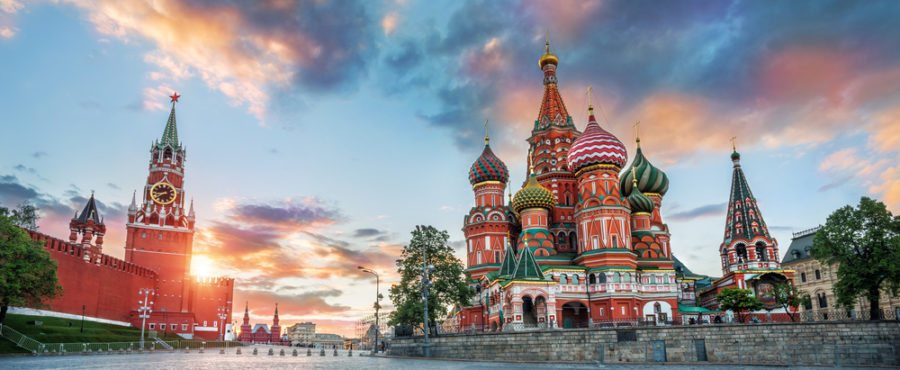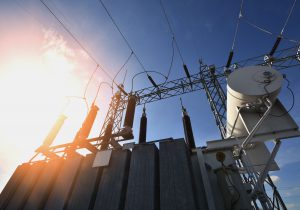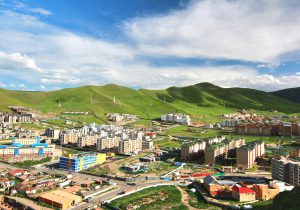
Russia is unquestionably a world’s superpower in the realm of natural resources, mining and export of energy raw materials. However, this position is only apparently a comfortable one. As a state, Russia is at the same time strongly dependent on income from the sale of oil, gas and coal to foreign buyers.
Russia has the world’s largest confirmed resources of natural gas, access to world’s second biggest hard coal resources and eighth largest oil reserves. Estimates suggest that Russia possesses 32 per cent of known reserves of natural gas, 12 per cent of crude oil, 10 per cent of coal and 8 per cent of world’s uranium.
Traditionally, Russian authorities find gas export the most important. A number of other countries depend on this raw material and Moscow has a long history of using gas as an instrument of political pressure, sometimes, with miserable results, like during the gas crisis in 2009. One of the consequences of the crisis was faster integration of the EU gas market, which now – in its altered form – much better resists the blackmail of the monopolistic supplier.
However, gas continues to have gigantic political significance, hence the export of this material, via gas pipelines, is under the control of the state, through the Gazprom corporation. The company is not only responsible for 94 per cent of gas production, but also is a monopoly as regards pipeline export. Other companies may only sell LNG, which is happening, though only on a very narrow scale compared to Gazprom’s operations. Russians seem to have missed the revolution of global LNG trading and are now trying to catch up. Compared to the largest producers of liquid natural gas, their share is marginal.
Oil giant
Russia is also world’s second (behind Saudi Arabia) producer of crude oil and the biggest market player outside the OPEC cartel. What is more, the territory of Russia is the transit area for most oil extracted in Kazakhstan. Oil export is of a lesser political significance to Russia than gas export and this is why, though the biggest market player is state-owned Rosnieft, there are many formally private entities operating in this market.
The export of oil and gas combined constituted 36 per cent of the entire 2016 federal budget[1]. With coal included, Russia produces 14 per cent of world’s fossil fuels.
Subsidy giant
Russia is not only a large producer of energy raw materials but also a big consumer of those. On one hand, this results from a fairly harsh climate, on the other – from low energy efficiency. Industry is very energy-consuming and most buildings are poorly insulated. As a result, all the sectors devour gigantic volumes of energy and its costs would be unbearable without subsidizing mainly gas, electricity and heating on a massive scale. The subsidies account for tens of billions of dollars each year and without income from export, the state could not afford that.
Electrical energy sector
Russia is both one of the largest producers and the biggest consumers of electricity. The country’s power system is divided into seven regions – Northwest, Center, South, Middle Volga, Urals, Siberia, and Far East. However, the Far East network is fragmented and poorly connected with other systems, just like the Siberian system. The other systems are well interconnected with one another and also well-integrated with neighbouring countries[2]. Most coal and gas sources have been privatized. The state still controls nuclear and hydroelectric power plants.
Nearly a half of the country’s energy is generated form gas; coal, water and nuclear plants account for nearly 20 per cent of the total volume. Excluding hydroelectrical plants, renewable sources constitute a narrow margin of the mix, which does not mean the Russians do not want to develop them. The authorities have conducted a number of auctions, based on those in western countries, to select the sources that will be granted state support. A curious fact is that the state-owned company, Rosatom, has an ambition to become a major player in the wind energy sector. A branch of Rosatom is building wind farms using a technology supplied by Dutch Lagerwey, with which Rosatom concluded a partnership agreement. In Russian discussions about the future of the energy sector one could hear voices suggesting that wind turbines pose better prospects to Rosatom than erecting nuclear power plants abroad. Unless the politics enters the scene, as was the case with nuclear power plants in Belarus or Turkey.
The meaning of nuclear power in the Russian energy strategy is to grow at the expense of coal and partly natural gas. By 2050 the country is to generate 45 to 50 per cent of electricity from nuclear plants. The Russians are investing in various new technologies, such as the floating power station constructed on the famous ship Akademik Lomonosov[3]. They are already building 4th generation reactors on fast Neutron ships.
Russian coal
Now Russia is suing about 45 per cent of its mined coal. The remaining volume is exported, also to Poland. Although coal is intensively used in certain places, such as some regions of Siberia, nowhere is it the dominant fuel used. Perhaps, anticipating the forthcoming decarbonization of energy sectors of many traditional buyers, the Russians are more focusing on coke fuel, which is essential in metallurgy. By 2020 Russia is planning to double the export of this material.
[1] https://www.eia.gov/beta/international/analysis.php?iso=RUS
[2] https://www.eia.gov/beta/international/analysis.php?iso=RUS
[3] http://wiadomosci.gazeta.pl/wiadomosci/56,114881,23356592,mala-lodka-towarzyszy-nuklearnemu-titanikowi-nie-bez-powodu.html




